When Stellar Empires Clash: GDW’s Dark Nebula and Imperium
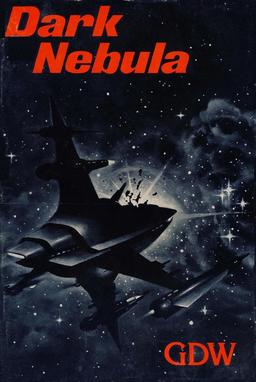 In this new Golden Age of science fiction and fantasy board games, when all the chatter is about the latest and greatest mega-games (when it isn’t about the big Fantasy Flight Holiday Sale), I’d like to take a moment to appreciate two classic games of interstellar combat: GDW’s Imperium and Dark Nebula, originally published in 1977 and 1980.
In this new Golden Age of science fiction and fantasy board games, when all the chatter is about the latest and greatest mega-games (when it isn’t about the big Fantasy Flight Holiday Sale), I’d like to take a moment to appreciate two classic games of interstellar combat: GDW’s Imperium and Dark Nebula, originally published in 1977 and 1980.
Both may appear simplistic compared to modern games of empire-building in space, like Eclipse, EVE Conquests, or Empires of the Void. At first glance, they may seem more comparable to fast-action games like Perry Rhodan: The Cosmic League, Astra Titanus, or the Warhammer 40K game Relic.
But just because both are packaged in relatively small boxes with a slender set of rules doesn’t mean they aren’t ambitious and nuanced games. Both are set in the Traveller universe designed by Marc Miller and, if you’re familiar with that game, they’re a great way to play out some of the far-ranging conflicts that shaped The Third Imperium.
Although it’s probably more accurate to say that Dark Nebula shared a setting with Imperium, which gradually became part of the Traveller universe. Imperium, an ambitious two-player game of space empire conflict set in 22nd Century, was released by GDW in 1977 — the same year the company also published Traveller. Imperium had a very intriguing backstory, with two great empires in conflict, hints of failed diplomacy, and a vast stellar empire in slow decline.
Conversely, the original boxed edition of Traveller didn’t really have a setting — it was sort of a generic system for role playing in space, and it drew on the popular vision of a galaxy-spanning human civilization found in the science fiction of the time by Poul Anderson, Isaac Asimov, Keith Laumer, H. Beam Piper, and others. (James Maliszewski did a splendid job of re-constructing the formative SF behind Traveller in “Appendix T.”) It was a game desperately in need of a rich setting, and it found one in Imperium.
I played Traveller and Imperium in the late 70s, and greatly enjoyed them both. They were connected by nothing more than the GDW logo at the time, and that was fine. But both proved to be popular and, as often happens with systems that share creators, their settings gradually merged as GDW retconned Imperium’s backstory into Traveller‘s emerging Third Imperium storyline. The board game’s scenario became known as the First Interstellar War, the first in a series of interstellar conflicts that eventually resulted in the overthrow of the Vilani Grand Empire of Stars (the Ziru Sirka) by the Terran Confederation and the emergence of the Rule of Man.
Imperium simulates the collision of the ancient Imperium with an upstart civilization centered on the planet Terra. The game has some interesting aspects. Terra is much smaller and weaker than the vast Empire, but also more nimble… as the game progresses the Imperial governor can appeal to the Emperor for help. If the appeal is well received, assistance can arrive in the form of terrifyingly powerful Imperial heavy cruisers and dreadnoughts… if it isn’t, the governor can find herself in a very tough spot indeed.
[Click on any of the images in this article for bigger versions.]
The development of Traveller picked up speed quickly, and truthfully I haven’t really kept up with it since the early 80s. The most concise summary I’ve found of the evolution of the setting can be found in the Setting section of Traveller‘s Wikipedia entry:
As Traveller became popular, supplements supported a default setting, which has come to be known as the Official Traveller Universe (OTU), in a small piece of the galaxy, known as Charted Space. The OTU is also known by the primary political entity in the setting, The Third Imperium. The starting point for this appears to be the board game Imperium.
The Third Imperium is the largest and human-dominated interstellar empire in Charted Space. It is a feudalistic union of worlds: local nobility operate largely free from oversight, restricted by convention and feudal obligations.
GDW had a whole family of popular science fiction games, including Double Star, Belter, Triplanetary, Fifth Frontier War, and Mayday. But Traveller and Imperium were the break-out hits, and it made sense to capitalize on them. In 1980, the company released Dark Nebula, which shared a setting and game system with the popular Imperium, and simulated the conflict between the Solomani Confederation, the third largest human interstellar state, and the honor-bound Aslan Hierate, an alien collective of 29 clans.
Dark Nebula includes 8 interstellar maps which can be fit together in multiple configurations, to enhance replayability. Here’s an example of how they fit together, in a pic of the Japanese edition:
Here’s the game description, printed on the sides of the box:
As the Aslan Hierate and the Solomani Confederation expand into unknown space, they meet, and soon fight, in a struggle for control that will bring the victor greater economic and political power. This is the setting for Dark Nebula, a game of interstellar warfare using the popular Imperium game system. Each side manipulates starships and troops in an effort to control worlds while denying them to the enemy.
Dark Nebula is a science fiction game set in a future with interstellar travel and powerful weaponry. Eight astrographic maps provide the setting for intense rivalry between warring worlds. 120 die cut counters provide the starships and troops to wage the war, while the rules booklet gives complete instructions for play. Dark Nebula uses the popular Imperium game system. Recommended for ages 12 to adult.
Both Imperium and Dark Nebula had second editions, unusual for GDW. The second edition of Imperium was released in 1992, with revised rules and a Kelly Freas cover. The new edition also had a description of the game on the back (the original edition was simply blank). Click on the image at right for a more legible version of the game summary.
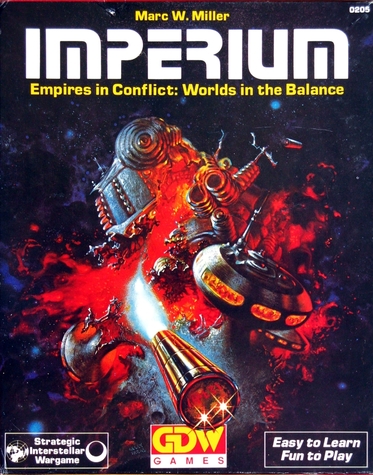 |
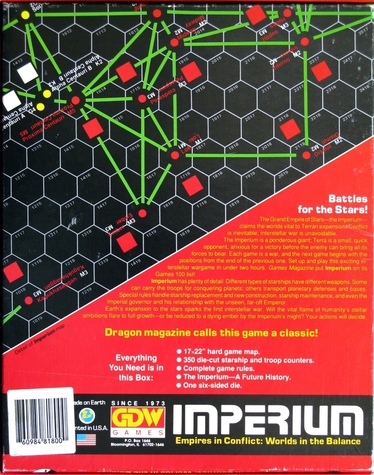 |
The second edition of Dark Nebula was released in 1983, with new box art by Charles Bernard. Like Imperium, the new edition also included an intriguing game description on the back (the first edition had a blank back cover.) Click on the image at right for a readable version.
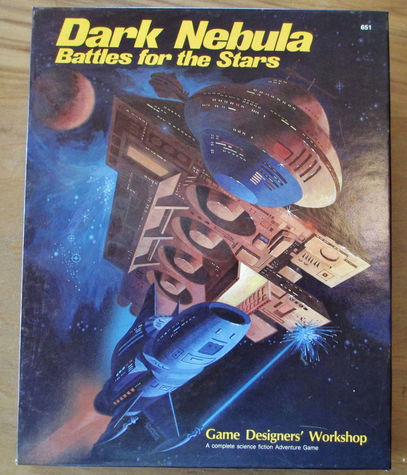 |
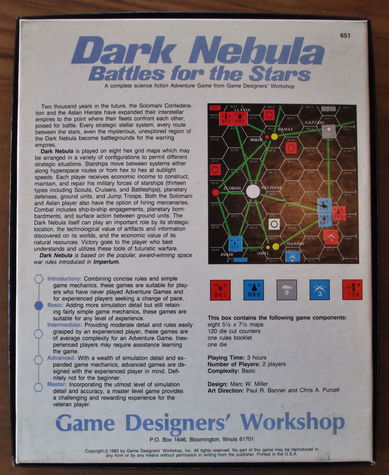 |
Game Designers’ Workshop (GDW) went out of business in 1996. Imperium 3rd Millennium, a new edition of the GDW version with improved graphics and updated rules, was briefly published by Avalanche Press in 2001, and was nominated for four Origins Awards.
Perhaps the biggest improvement with the Avalanche Press version was the gorgeous maps — Avalanche added new side maps for 3D space combat and planetary combat, and re-did the main stellar map as a glossy color affair.
Both Dark Nebula and Imperium are now long out of print. For collectors, one of the most desirable versions of the games was published by Marc Miller’s Far Future Enterprises in 2001, part of his deluxe series of Traveller reprints.
Traveller: Games 1-6+: The Classic Games was volume five in the Classic Traveller Reprint series, and actually includes all eight Traveller board games:
0- Imperium (predating the publication of Traveller)
1- Mayday
2- Snapshot
3- Azhanti High Lightning
4- Fifth Frontier War
5- Invasion: Earth
6- Dark Nebula
7- Striker (not a standalone game in itself, but the Traveller 15mm ground miniatures game system)
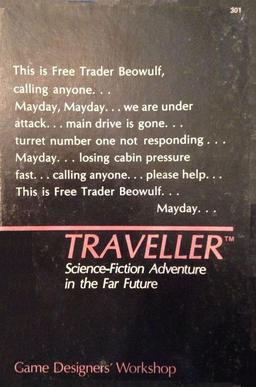 The counters and boards are included, printed in black & white and suitable for photocopying, but not really pragmatic for actually playing the games in this format. This book is really most useful as a kit to allow the dedicated hobbyist to re-create the games.
The counters and boards are included, printed in black & white and suitable for photocopying, but not really pragmatic for actually playing the games in this format. This book is really most useful as a kit to allow the dedicated hobbyist to re-create the games.
It was originally published as a convenient way for collectors to get their hands on games that were long out of print and expensive collector’s items. Of course, the entire line of Classic Traveller Reprint volumes from Far Future Enterprises is now long out of print and most of them are (you guessed it) expensive collector’s items. However, copies of The Classic Games 1-6+ are currently available on eBay in mint condition for around $40, a bargain.
Imperium was designed by Frank Chadwick, John Harshman, and Marc W. Miller, and published by GDW in 1977 in a flat green-and-black box. The cover art was by Stephen Fabian. Used copies are generally available online for $15 – $25.
Dark Nebula was designed by Marc W. Miller and published by GDW in 1980 in a small Traveller-sized box. The cover art was by Stephen Fabian. I bought an unpunched copy of the first edition on eBay last week for just under $20.
There’s a great survey of GDW’s space games at Wayne’s Books.
See all of our recent game article here.
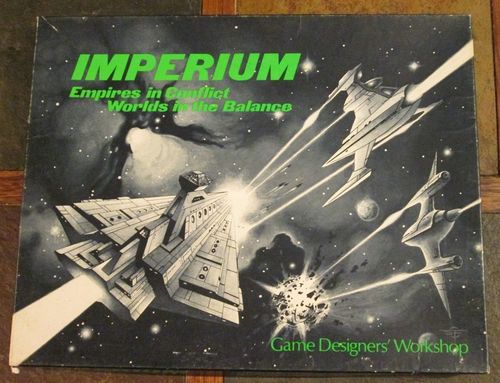
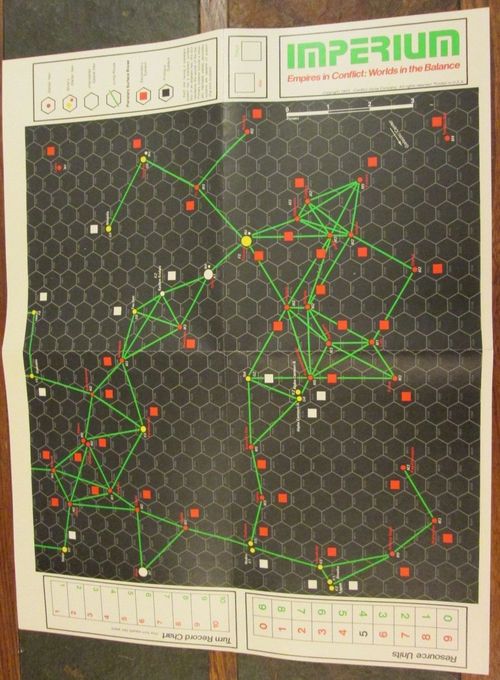
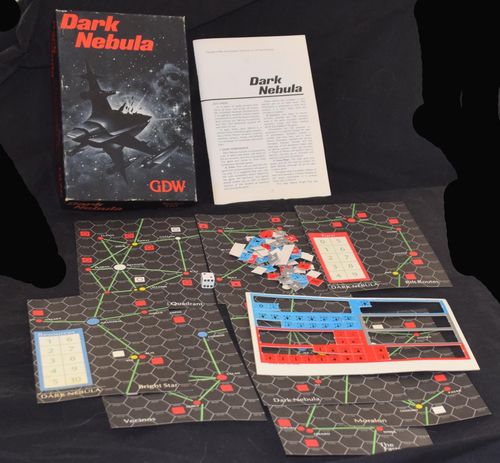
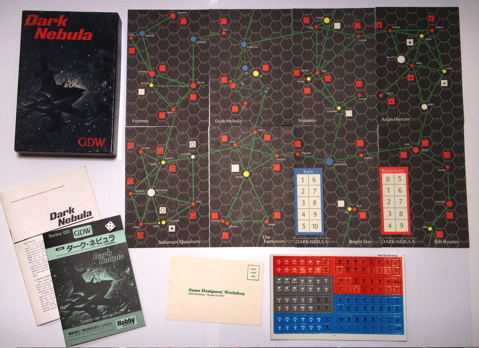
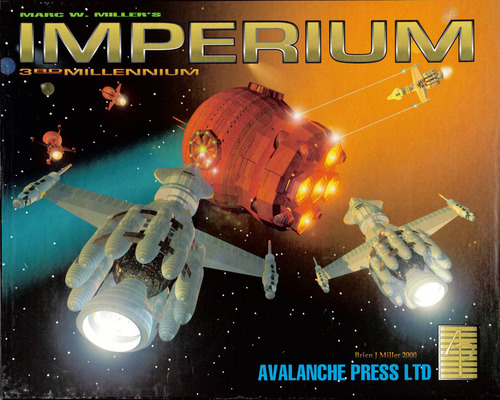
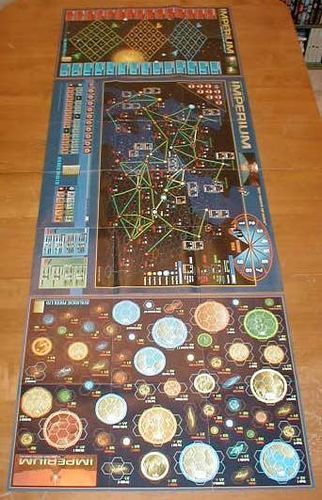
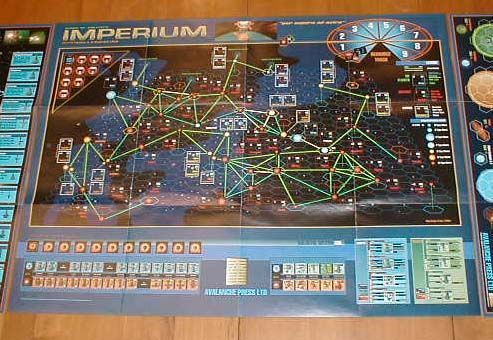
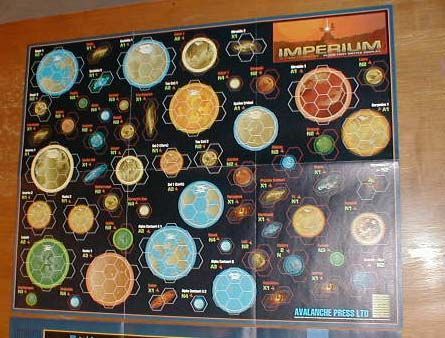
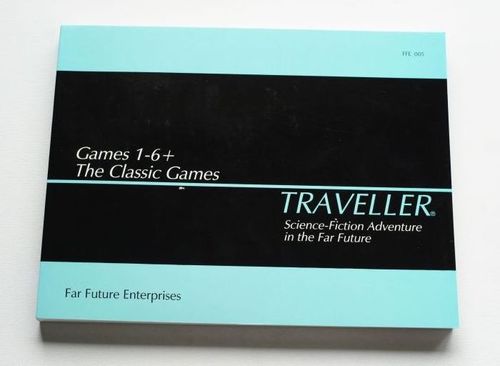
By amazing coincidence, I just treated myself to a copy of Dark Nebula from Wayne’s Books (which seller I recommend most highly).
I don’t have a copy of the original Imperium, at least not yet — instead, I also picked up a copy of Azhanti High Lightning. (A friend of mine owned a copy back in high school, and I was always insanely jealous — who wouldn’t want a game that included deck plans for a 60,000 ton cruiser?)
Joe,
That is a coincidence! But I’m happy to hear it. Let us know if you get a chance to play it.
And now I’m jealous of your copy of Azhanti High Lightning. That’s a game I’ve been searching for for decades. When I finally find a copy, trust me… you’ll hear about it here.
And I’m not sure when/if I’ll get to play either of them, but just reading through the rulebooks (and Traveller Supplement 5 — Lightning Class Cruisers) reminds me of how fiercely I loved Traveller (specifically, 1st edition Little Black Book-era Third Imperium Traveller) back in the day.
And I miss those little black books! I did get the big, floppy books from FFE, so I have all of the content, but it’s just not the same. (Not least because the BFBs are kind of unwieldy.)
(Also, that Wayne’s article is great stuff! I was only barely aware of most of them back in the day. Unfortunately, many of the ones I don’t have are prohibitively expensive these days, if available at all.)